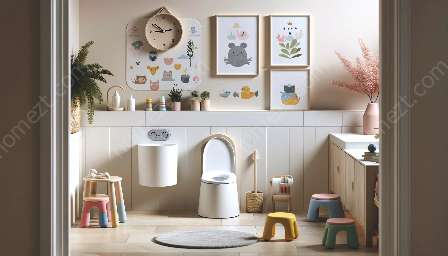Positive reinforcement techniques are powerful tools that can be used to encourage and support children during the potty training process in nurseries and playrooms. These techniques focus on rewarding and praising children for displaying desired behaviors, ultimately promoting a positive and encouraging environment for successful potty training. By implementing these techniques effectively, parents and caregivers can create an experience that is not only effective in transitioning children to using the toilet independently, but also fosters a sense of accomplishment, confidence, and self-esteem.
Understanding Positive Reinforcement Techniques
Positive reinforcement is a form of operant conditioning that involves rewarding desired behaviors to increase the likelihood that they will be repeated. When it comes to potty training in nurseries and playrooms, positive reinforcement can be used to motivate children to use the toilet successfully and develop good toileting habits. By incorporating positive reinforcement techniques, children can be encouraged to recognize and respond to their body's natural signals and learn to use the toilet in a timely and appropriate manner.
Benefits of Positive Reinforcement Techniques for Potty Training
Utilizing positive reinforcement techniques during potty training can result in several benefits for children, parents, and caregivers. Firstly, it creates a supportive and encouraging environment that helps children feel confident and secure as they navigate this new skill. By using praise, rewards, and positive feedback, children are motivated to continue exhibiting the desired behaviors, leading to a smoother and more positive potty training experience. Additionally, positive reinforcement fosters a strong parent-child or caregiver-child bond by promoting communication and trust, as well as enhancing the child's self-esteem and emotional well-being. Furthermore, positive reinforcement helps children develop a positive association with using the toilet, which can lead to successful and consistent toileting habits in the long run.
Effective Positive Reinforcement Techniques
There are several effective positive reinforcement techniques that can be employed during potty training in nurseries and playrooms. One approach is the use of verbal praise, where children are praised enthusiastically for using the toilet or showing interest in toilet training. Another technique is the use of tangible rewards, such as stickers, small toys, or a special treat, as an immediate reinforcement for successful toileting. Additionally, establishing a reward chart can provide visual reinforcement and motivation for children as they progress through their potty training journey. It is important to tailor the positive reinforcement techniques to the individual child, taking into consideration their preferences and interests to maximize the effectiveness of the rewards.
Creating a Positive Environment in Nurseries and Playrooms
Aside from implementing positive reinforcement techniques, creating a positive environment in nurseries and playrooms is essential for successful potty training. This involves ensuring that the physical environment is conducive to toileting, with child-sized toilets, step stools, and other necessary equipment readily available. Additionally, providing clear and consistent communication about the toilet training expectations, using positive language, and maintaining a patient and supportive attitude are crucial in promoting a positive experience for the children.
Conclusion
Positive reinforcement techniques play a pivotal role in promoting successful potty training experiences in nurseries and playrooms. By utilizing these techniques effectively, parents and caregivers can create an environment that encourages and supports children as they acquire this important skill. The benefits of positive reinforcement extend beyond successful toileting, impacting children's self-esteem, emotional well-being, and the parent-child or caregiver-child relationship. By fostering a positive environment and implementing effective positive reinforcement techniques, children can embark on their potty training journey with confidence and achieve long-term success in developing good toileting habits.


